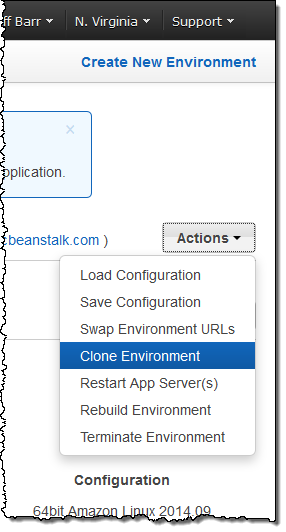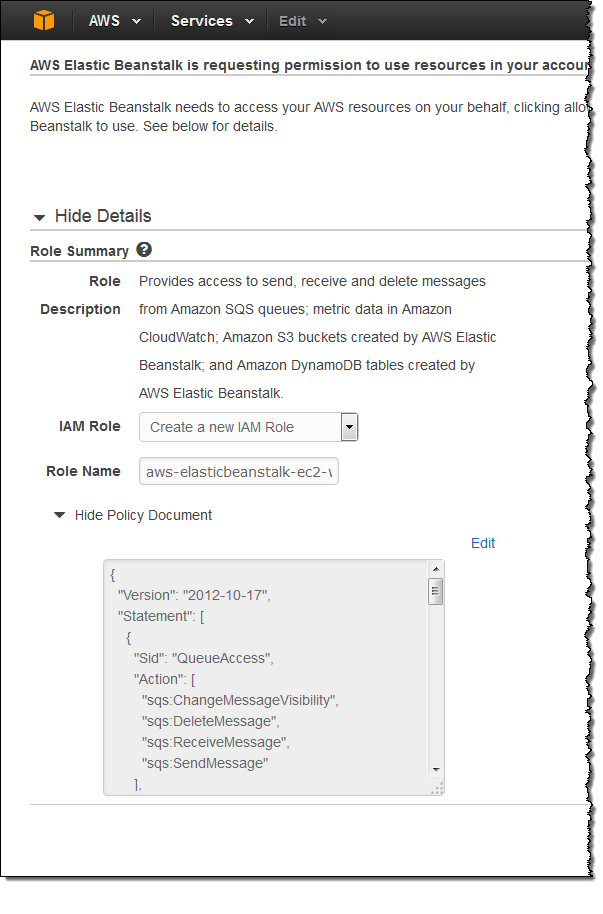AWS News Blog
Elastic Beanstalk Update – Clone Environments, 1-Click IAM Role Creation, Periodic Worker Tasks
AWS Elastic Beanstalk simplifies the process of deploying and scaling Java, .NET, PHP, Node.js, Python, Ruby, Go, and Docker web applications and services.
Today we are making Elastic Beanstalk even more useful by adding three new features:
- Easy cloning of environments.
- 1-Click IAM role creation.
- Support for periodic worker tasks.
Let’s take a look at each of these new features!
Easy Cloning of Environments
You can now use an existing Elastic Beanstalk environment as the basis for a new one by simply cloning and then editing it. Cloning an environment also creates copies of any AWS resources associated with it (it does not, however copy data stored in Amazon RDS to the clone). As part of the cloning process you have the opportunity to update the Environment Name, Environment URL, Description and Platform values to reflect the new environment. You will use the same language and framework when you update the Platform and can choose a newer version of the same solution stack.
You can initiate the cloning process from the Elastic Beanstalk Console or from the Elastic Beanstalk command line, better known as eb (documentation). Here’s how you do it from the Console:

1-Click IAM Role Creation
IAM one-click role creation is a feature that various AWS services have adopted in order to streamline the process of creating IAM roles and granting those roles permissions. One-click role creation appears in Elastic Beanstalk as part of the workflow for creating new applications or launching new environments.
Creating roles with a single click is simple and straightforward, and does not require you to use the IAM Console. You simple create the role and configure the policy without leaving the Beanstalk workflow. You can even edit the policy directly.
Here’s what this feature looks like:

Periodic Worker Tasks
The Elastic Beanstalk Worker Tier is designed to host long-running processes such as reporting, analytics, and database cleanup. Workers are simply HTTP request handlers that are triggered by an Amazon Simple Queue Service (Amazon SQS) message.
You can now configure Elastic Beanstalk to send messages to a queue periodically. The message is delivered as an HTTP POST to a configurable URL on the local host; the HTTP header will contain the name of the periodic task.
Your Worker Tier can consist of a single EC2 instance or an auto-scaled, load-balanced set of EC2 instances.
In order to invoke periodic tasks, your application source bundle must include a cron.yaml file at the root level. The file must contain information about the periodic tasks you want to schedule. Specify this information using standard crontab syntax.
Available Now
These features are available now and you can start using them today!
— Jeff;